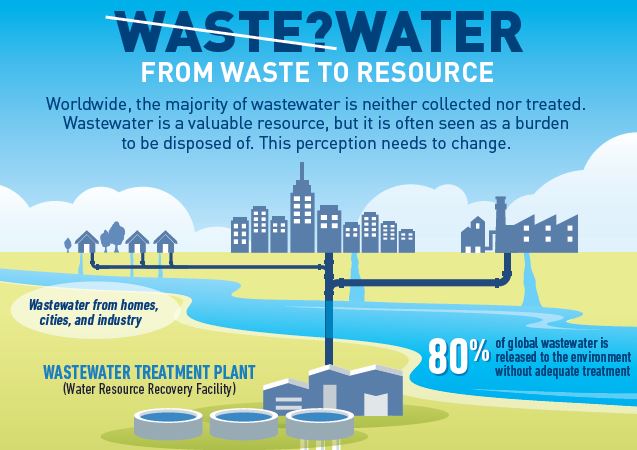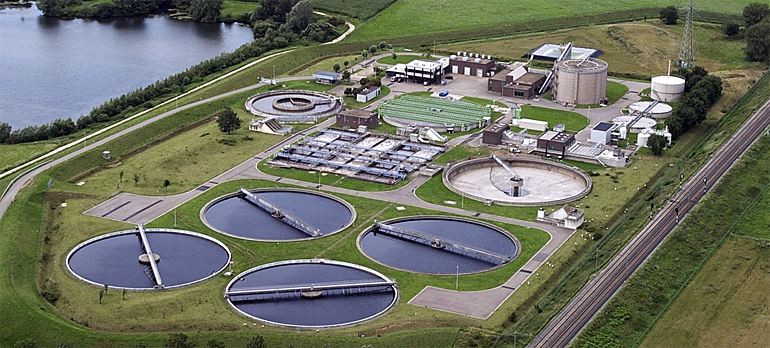Understanding Wastewater Treatment Processes and Their Ecological Impact
The details of wastewater treatment procedures play a crucial duty in mitigating ecological obstacles connected with water contamination. Each phase, from preliminary to sophisticated treatments, is developed to deal with particular contaminants, ultimately protecting both public health and wellness and marine ecological communities.
Review of Wastewater Therapy
Exactly how is wastewater transformed into a secure source for the atmosphere? Wastewater therapy is a critical procedure created to eliminate contaminants from made use of water, therefore securing public health and safeguarding environments. This process begins with the collection of wastewater from household, industrial, and commercial resources, which is then directed to therapy centers.
At these facilities, different physical, chemical, and organic methods are utilized to deal with the wastewater. Subsequently, biological therapies, such as activated sludge procedures, utilize microorganisms to damage down organic matter.
The dealt with effluent can be safely discharged right into all-natural water bodies or reused for irrigation and commercial purposes, promoting source conservation. Additionally, the treatment procedure creates biosolids, which can be repurposed as fertilizers or soil changes, further enhancing sustainability.
Phases of Therapy Procedures
The wastewater treatment process generally is composed of 3 key phases: preliminary, primary, and additional therapy. Each phase offers a distinctive duty in minimizing the toxin load and making sure the effluent fulfills ecological standards before discharge.

The primary treatment stage focuses on the physical separation of suspended solids from the wastewater. Through sedimentation, heavier particles clear up at the base of sedimentation storage tanks, developing sludge, while lighter products, such as oils and greases, float to the surface area and are skimmed off. This process considerably minimizes the organic and inorganic tons in the wastewater.
Secondary treatment is an organic procedure aimed at more lowering the concentration of organic issue. This stage is important for achieving the essential biochemical oxygen demand (FIGURE) decrease, ultimately leading to cleaner effluent all set for discharge or additional therapy.

Advanced Therapy Technologies
Following the second treatment procedures, advanced therapy technologies play an essential function in additional boosting the high quality of dealt with wastewater. These technologies are made to eliminate recurring pollutants that are not properly gotten rid of throughout main and secondary treatments, making certain the effluent satisfies rigorous regulatory criteria.
Among the commonly made use of sophisticated treatment approaches are membrane filtering, reverse osmosis, and progressed oxidation processes. Membrane purification, including microfiltration and ultrafiltration, is efficient in dividing fine bits, virus, and colloids from the water (Wastewater). Reverse osmosis utilizes semi-permeable membrane layers to get rid of dissolved solids, leading to top quality water appropriate for numerous applications
Advanced oxidation processes (AOPs) employ solid oxidants to deteriorate natural pollutants, including pharmaceuticals and individual treatment items that are resistant to conventional treatment. These techniques enhance the biodegradability of complex substances, facilitating their elimination.
An additional significant technology is making use of organic nutrient elimination procedures, which especially target nitrogen and phosphorus, avoiding eutrophication in getting water bodies. Generally, innovative therapy modern technologies are vital for accomplishing greater levels of purification, promoting water reuse, and securing public wellness while resolving the obstacles connected with wastewater monitoring.
Ecological Advantages of Therapy
Many ecological advantages develop from reliable wastewater therapy procedures that contribute to ecosystem health and sustainability. Primarily, these processes significantly lower the launch of unsafe toxins right into all-natural water bodies, which assists maintain aquatic communities. By getting rid of impurities such as hefty metals, nutrients, and pathogens, dealt with wastewater minimizes the threat of waterborne illness and promotes biodiversity in marine settings.
In addition, wastewater treatment facilities often use innovative visit their website modern technologies that make it possible for water recycling and reuse. This technique not only conserves fresh water resources but additionally minimizes the demand on all-natural water materials. Boosted nutrient removal from wastewater can additionally stop eutrophication, a process that brings about algal blossoms and subsequent oxygen depletion in water systems.
Furthermore, effective therapy processes can lessen greenhouse gas exhausts, specifically methane and laughing gas, which are often launched during unattended wastewater decomposition. By capturing and using biogas from anaerobic digesters, facilities can transform waste into renewable energy, thus adding to a reduction in fossil gas dependency.
Challenges and Future Trends
While the ecological benefits of wastewater therapy are clear, a number of difficulties continue that hinder ideal outcomes in this area. One major problem is maturing infrastructure, which usually results why not try this out in inadequacies and increased operational prices - Wastewater. Several treatment plants were developed years earlier, and their capabilities do not line up with modern-day needs, that include stricter regulative criteria and greater quantities of wastewater due to urbanization

Looking in advance, there is a growing emphasis on source recuperation and circular economic climate principles within wastewater therapy. Technologies such as anaerobic food digestion, which can create biogas, and advanced purification innovations are acquiring grip. These approaches not only enhance therapy performance however also advertise sustainability.
Eventually, dealing with these challenges calls for partnership among stakeholders, financial investment in modern technology, and a dedication to ongoing research study. By accepting these patterns, the wastewater therapy market can develop to fulfill the demands of a transforming atmosphere and culture.
Final Thought
In final thought, wastewater treatment procedures play an essential role in improving ecological top quality and public go to the website health and wellness. The multi-stage treatment framework, coupled with innovative modern technologies, successfully minimizes pollution and promotes lasting water monitoring.